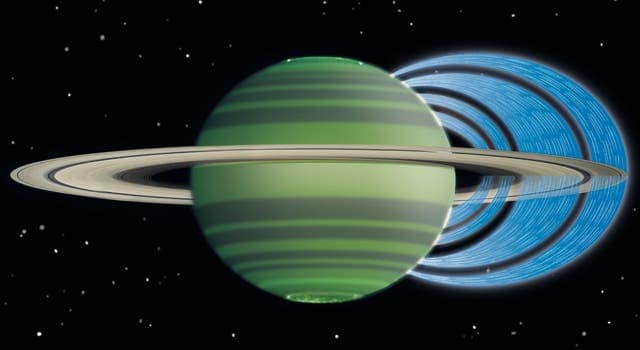
New observations have tracked the “rain” of charged water particles over Saturn spewing from its rings with unprecedented detail. The findings show that the rain is dispersed across a larger surface of the planet than previously thought, which might explain some peculiar meteorologic phenomenae.
The study concludes that due to erosion, Saturn’s icy rings discharge tiny ice particles that wind-up in the planet’s upper-atmosphere. Once there, the ice particles form rain droplets and in the process influence the composition and temperature structure of parts of Saturn’s upper atmosphere.
“Saturn is the first planet to show significant interaction between its atmosphere and ring system,” said James O’Donoghue, the paper’s lead author and a postgraduate researcher at Leicester. “The main effect of ring rain is that it acts to ‘quench’ the ionosphere of Saturn. In other words, this rain severely reduces the electron densities in regions in which it falls.”
New findings suggest that the rain falling from the planet’s rings located some 36,000 miles [60,000 kilometers] overhead is of greater consequence than previously thought and serve to explain why for years observations have shown electorn densities to be unusually low at certain latitudes on Saturn.
By using data from the Keck Observatory collected over the course of two hours in 2011, O’Donoghue and his team were able to observe pieces of the ringed planet that have never been mapped in such exquisite detail. The ring rain’s effect occurs in Saturn’s ionosphere, where charged particles are produced when the otherwise neutral atmosphere is exposed to a flow of energetic particles or solar radiation. When the scientists tracked the pattern of emissions of a particular hydrogen ion with three protons (triatomic hydrogen), they expected to see a uniform planet-wide infrared glow. What they observed instead was a series of light and dark bands – with areas of reduced emission corresponding to water-dense portions of Saturn’s rings and areas of high emission corresponding to gaps in the rings.
The researchers hypothesized that charged rain was drawn towards the planet along its magnetic field lines, where the glowing triatomic hydrogen ions were neutralized. This caused the shadowy, dark bands the researchers were referring to earlier.
“Where Jupiter is glowing evenly across its equatorial regions, Saturn has dark bands where the water is falling in, darkening the ionosphere,” said Tom Stallard, a paper co-author at Leicester. “We’re now also trying to investigate these features with an instrument on NASA’s Cassini spacecraft. If we’re successful, Cassini may allow us to view in more detail the way that water is removing ionized particles, such as any changes in the altitude or effects that come with the time of day.”
Findings were reported in the journal Nature. [source NASA]






